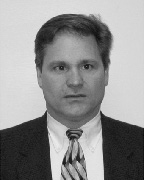Most owners understand that the architect is a critical piece of any redevelopment project. At the same time, most architects recognize the value that the various engineering disciplines bring to the process. What is sometimes lacking, however, is a collaborative relationship that looks at the project comprehensively from the outset so that the project team's decisions encompass the greatest possible insight and depth of understanding.
The reality is that some owners and developers fail to include their design, surveying, engineering and environmental specialists in the planning process until after they can sufficiently influence the direction of the project, then end the relationship before these subconsultants can add the full value of their expertise.
Whether this is unintentional or by design, practitioners of this approach often find themselves in a bind because of it. I hate to think about how much time and money our industry wastes because of difficult-to-alter decisions made without consulting the specialists who must eventually implement these actions.
Of particular importance is the relationship between the architect and the civil engineer. We find that good architects have a great understanding of and can provide great direction to the structural engineering and mechanical/electrical/plumbing (MEP) functions. The best civil engineers use their own expertise and knowledge to add value to the environmental, traffic, surveying, and landscape architecture aspects of a project.
At our firm, we've had the pleasure of working on several prominent redevelopment projects, including the conversion of the Charleston Chew candy factory in Everett into Charleston Lofts and the renovation of a former bra factory in East Boston into the highly regarded Atrium Lofts at 156 Porter St.
In one current project - the East Mill redevelopment project in North Andover - we've seen how this team-based collaboration can yield positive results.
A vital piece of the Machine Shop Village neighborhood redevelopment plan, East Mill is a mixed-use complex that reuses existing Davis and Furber factory buildings augmented by new structures. Even in these difficult economic times, East Mill is attracting both residential and commercial tenants, in no small part because of developer RCG, LLC's successful strategy of creating an immediate buzz with the opening of two anchor restaurants.
Another of RCG's good decisions - assembling an experienced project team early in the planning process - helped bring this strategy to fruition. When RCG received a commitment from one of the restaurants, it was immediately clear that the schedule would be tight. Because the team was already on board and had a good understanding of the overall project goals, we quickly determined that the best way to achieve RCG's goals was to split the bid package into three contracts. This way, each distinct component of the overall project received individual attention from a contractor, and the restaurant was completed on a fast track.
Similarly, the project team helped prevent a potential problem with a parking area on the southerly side of the property. Rather than extend the parking lot into a narrow area near abutters and the mill pond, the project team - including architects Burt Hill and Khalsa Design, environmental consultant Epsilon, landscape architect Landworks - determined that stormwater management structures and open space were a better use for that portion of the land. Absent that collaboration, additional parking may have resulted - along with unhappy abutters and environmental issues that could have delayed the project. And in current market conditions, any delays in project execution can be deadly.
We've also seen how land surveyors can add value at the front end of a redevelopment project. A tremendous amount of infrastructure is buried without record in these old properties, so researchers may find critical information in libraries or museums, rather than conventional.
In some cases, the discovery of documentation of old pipes, such as stone culverts or sluiceways can become an asset for engineers. If these structures are abandoned, they can be used as telecommunication conduits. If they are functional, they can be relined or upgraded for drainage. The critical piece is knowing and understanding where they are and having the insight to know where to look.
Even with all this upfront effort, issues still arise in the construction phase, so it is critical to keep architecture and engineering talent on hand. For example, in any redevelopment project, you will encounter subsurface latent conditions - this occurs constantly on old mill sites. Having the continued involvement of a senior-level engineer who can evaluate a problem and make a decision in hours, rather than days or weeks, is every bit as important to the success of a project as any other element.
David Giangrande, P.E, is president of Design Consultants, Inc., Somerville, Mass.
Tags:
Getting the full value of your project teams' expertise with Design Consultants, Inc.
October 29, 2008 - Spotlights









